Recent Storm Damage Posts
Preventing Water Damage in Your Home | SERVPRO of Mid-City San Diego
2/18/2025 (Permalink)
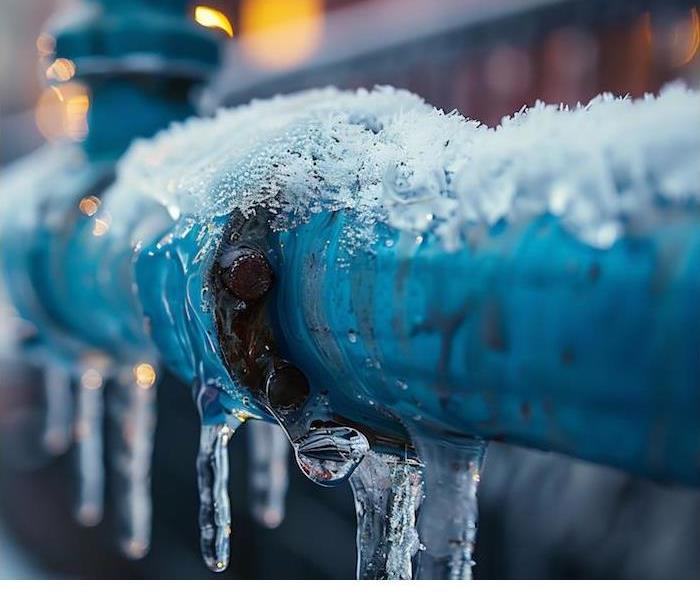 Protect Your Pipes from Freezing This Winter
Protect Your Pipes from Freezing This Winter
As winter approaches in San Diego, it’s important to take steps to protect your home from the potential dangers of water damage. While the region doesn’t experience extreme cold like other parts of the country, the risk of frozen pipes and heavy rain can still lead to costly and stressful problems. SERVPRO of Mid-City San Diego is here to help homeowners understand how to prevent water damage from internal sources like pipes, appliances, and more.
Protect Your Pipes from Freezing This WinterOne of the most common causes of water damage in the winter is frozen pipes. While San Diego doesn’t often face sub-zero temperatures, it can still get chilly enough for water in unprotected pipes to freeze, causing them to burst. When this happens, the resulting water leak can cause significant damage to your home’s structure, flooring, and belongings.
To prevent this, consider insulating pipes in unheated areas like attics, garages, or basements. If you have exposed pipes on exterior walls, use pipe insulation or heat tape to keep them warm. Also, remember to keep the thermostat set at a steady temperature, especially when you’re away from home, as fluctuating temperatures can increase the risk of freezing.
Keep Your Appliances in CheckLeaking appliances can also contribute to water damage inside your home, especially during the winter months when we tend to use our heaters, dishwashers, washing machines, and refrigerators more frequently. Regularly inspect hoses and connections for any signs of wear and tear, especially around your dishwasher, washing machine, and water heater. A small leak can quickly turn into a large problem if not addressed.
It’s also a good idea to check for any signs of standing water under appliances and clean out any clogged drains. Servicing your appliances regularly ensures they run efficiently and reduces the risk of leaks that could cause significant water damage.
Prepare for Heavy RainfallWhile San Diego might not face the same level of rainfall as other regions, the occasional heavy storm can still overwhelm gutters and drains, leading to water damage. Clear your gutters and downspouts of debris to ensure water flows freely and doesn’t back up onto your roof or into your walls. Also, check for cracks in windows and doors that could allow rainwater to seep in and damage your home’s interior.
By taking a few simple steps, you can prevent water damage from internal sources like pipes and appliances. Regular maintenance and quick attention to leaks or potential issues will save you from major repair costs in the future.
SERVPRO of Mid-City San Diego is here to help with any water damage issues that arise. If you experience any leaks, frozen pipes, or water damage from appliances, don’t hesitate to call us. We offer expert restoration services to get your home back to normal.
Visit SERVPRO of Mid-City San Diego to learn more!
How to Quickly Respond to Plumbing Failures | SERVPRO of Mid-City San Diego
2/18/2025 (Permalink)
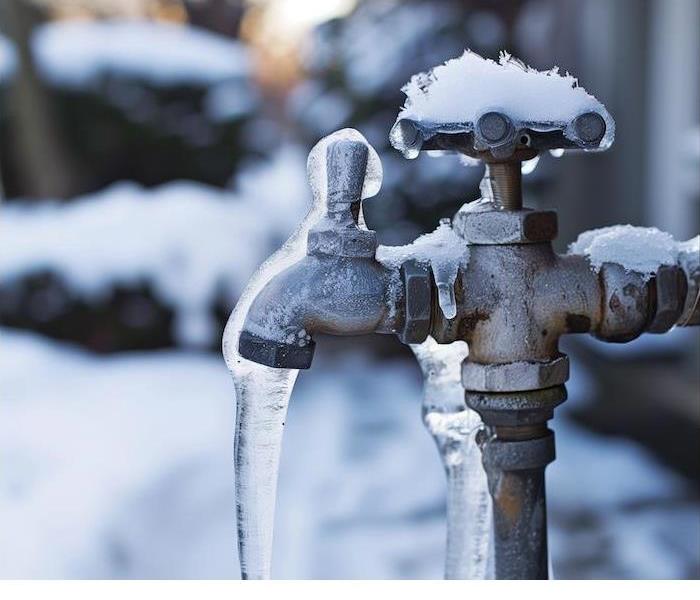 Plumbing failures can happen at any time and can disrupt your business operations, causing costly damage.
Plumbing failures can happen at any time and can disrupt your business operations, causing costly damage.
Proactive Measures to Prevent Plumbing IssuesPlumbing failures can happen at any time and can disrupt your business operations, causing costly damage. As a business owner in San Diego, it’s crucial to understand how to prevent plumbing issues and how to respond when they occur. With the potential for unexpected plumbing disasters year-round, staying prepared is essential.
Regular Plumbing InspectionsThe best way to avoid plumbing failures is through routine inspections. Hire a professional plumber to check your pipes, drains, and fixtures regularly. A quick inspection can identify early signs of wear, leaks, or blockages, saving you from larger, more costly issues down the road. If you operate in a space with older plumbing, proactive maintenance becomes even more critical.
Proper Drainage and Water ManagementEnsure that all areas prone to water exposure—like kitchens, bathrooms, and basements—have proper drainage and are regularly cleaned. Clogs are a common cause of plumbing failures, and they can often be avoided by keeping drains clear. Encourage your employees to dispose of waste properly, and make sure your business is equipped with functioning sump pumps or drainage systems.
How to Respond When Plumbing FailsUnfortunately, even with preventive measures in place, plumbing failures can still occur. If disaster strikes, quick action is key. The longer you wait to address the problem, the more extensive the damage will be. Here’s how to respond:
- Shut Off the Water Supply: Immediately turn off the main water supply to prevent further flooding or damage. Knowing where your water shut-off valve is located is essential for quick response.
- Assess the Damage: If possible, assess the severity of the plumbing issue. Is it a small leak, or is the damage more widespread? This will help you determine the next steps.
- Contact a Professional: When plumbing failures happen, it’s best to contact experts like SERVPRO of Mid-City San Diego. Our team specializes in fast response times to minimize damage and restore your business space. We’ll take care of the water damage, so you can focus on running your business.
Frozen Pipes in San Diego? It Can Happen!While San Diego’s winter temperatures rarely reach freezing, there is still a chance for freezing pipes in some areas, especially in higher elevations or poorly insulated spaces. To prevent this, make sure your pipes are properly insulated, and keep temperatures regulated in areas where water lines are exposed to the cold. Even if the temperatures dip below freezing for a short period, taking precautions can help you avoid damage.
Ready to Act? Contact SERVPRO of Mid-City San Diego!When plumbing failures strike, don’t wait for the damage to escalate. Contact SERVPRO of Mid-City San Diego for fast, reliable water damage cleanup and restoration services. Our team is here to help, 24⁄7.
Get in touch with us today!
How to Prevent Winter Damage to Your Home | SERVPRO of Mid-City San Diego
1/7/2025 (Permalink)
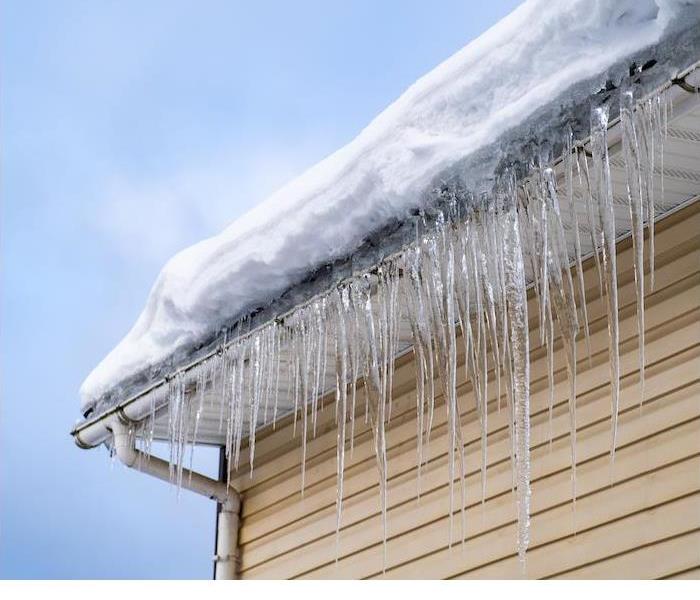 Prepare your home for winter with SERVPRO of Mid-City San Diego. Protect against rain, cold, and damage—contact us today!
Prepare your home for winter with SERVPRO of Mid-City San Diego. Protect against rain, cold, and damage—contact us today!
San Diego may be known for its sunny weather, but winter can still bring its share of challenges for homeowners. While heavy snow and freezing temperatures aren’t typical here, the rainy season and cooler temperatures can pose risks to your home if you’re not prepared. Protecting your home from potential winter damage is essential to avoid costly repairs and maintain a safe and comfortable living environment.
##Watch Out for Winter Rain
Winter in San Diego often brings rain, and while it’s a welcome change for our usually dry climate, it can lead to water damage if your home isn’t properly maintained. Clogged gutters are a common culprit during the rainy season. Debris can cause water to overflow, potentially damaging your roof, walls, and foundation. Ensuring your gutters are clean and functioning correctly can make a big difference in preventing water intrusion.
Additionally, inspect your roof for any loose shingles or cracks. Even minor issues can allow water to seep into your home, causing leaks and mold growth. Regular roof maintenance is a simple step that can save you from significant headaches during the rainy months.
##Prepare for Cooler Temperatures
While San Diego winters are mild compared to other parts of the country, cooler nights can still impact your home. Drafty windows and doors can let in cold air, driving up your heating bills and making your home less comfortable. Sealing any gaps and adding weather stripping is a cost-effective way to improve insulation and energy efficiency.
Another area to pay attention to is your plumbing. Although freezing temperatures are rare, exposed pipes in unheated spaces like garages or basements could be at risk if temperatures drop. Wrapping pipes with insulation can prevent potential freezing and bursting, even during an unexpected cold snap.
##Trust SERVPRO of Mid-City San Diego for Winter Prep and Restoration
Preparing your home for winter is essential, but even with the best precautions, unexpected damage can occur. SERVPRO of Mid-City San Diego is here to help®. Whether you’re dealing with water damage from heavy rain or other winter-related issues, our team is ready to restore your home quickly and efficiently.
Stay ahead of potential problems by taking proactive steps to protect your property. And if winter weather leaves you with damage, don’t hesitate to reach out to SERVPRO of Mid-City San Diego.
Visit our website today to learn more about our services and how we can help keep your home safe and sound this winter: SERVPRO of Mid-City San Diego.
Don’t Get Wet: Prepare Your Home for the Possibility of Flooding | SERVPRO of Mid-City San Diego
12/3/2024 (Permalink)
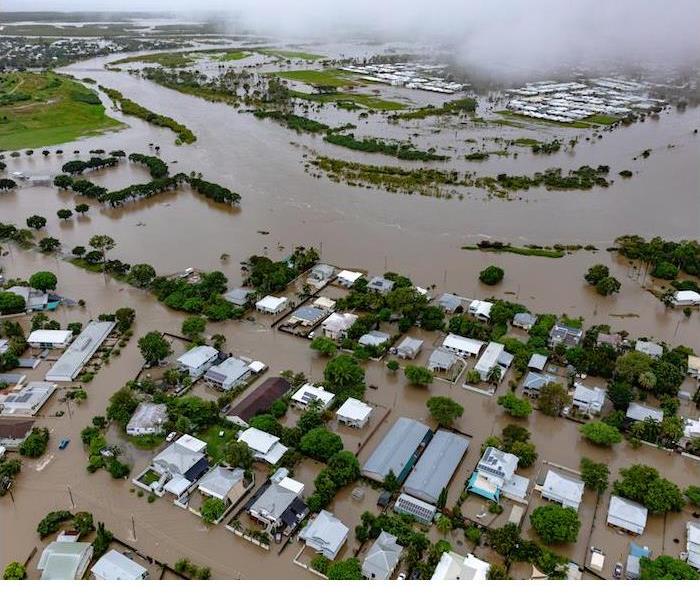 Protect your San Diego home from flooding—stay prepared with SERVPRO tips and expert services today!
Protect your San Diego home from flooding—stay prepared with SERVPRO tips and expert services today!
Flooding can be a real concern in our part of San Diego. While the area doesn’t face the constant threat of floods like some parts of the country, heavy rainfall, coastal storms, and infrastructure issues have caused significant flooding in the past. In fact, during periods of intense rainfall, areas around us have seen road closures and property damage due to unexpected floods. Understanding these risks and taking proactive measures can save homeowners a lot of time, stress, and money when the next storm rolls in.
Know the Risks of Flooding
While San Diego is known for its mild, sunny climate, it’s important to recognize that flooding can still occur, especially during the rainy season and as a result of heavy downpours. The Mid-City area is no stranger to flash floods, which can develop quickly and unexpectedly. For example, in recent years, heavy rains have overwhelmed drainage systems, leading to temporary street flooding and water accumulation in low-lying areas.
Understanding these historical trends allows you to better prepare your property for similar conditions in the future. SERVPRO of Mid-City San Diego recommends homeowners stay updated on local weather reports and keep an eye on potential flash flood warnings.
How to Protect Your Home from Flooding
Taking proactive steps to safeguard your home from flooding can make a big difference. Here are some helpful tips:
Inspect Your Property’s Drainage Systems
Make sure your gutters and downspouts are clean and direct water away from your foundation. Clogged gutters can cause rainwater to pool and overflow, leading to damage around your home.
Elevate Important Systems and Valuables
Consider elevating your HVAC system, electrical appliances, and other important equipment in flood-prone areas of your property. If you have valuable items stored in your basement or lower floors, relocate them to higher ground to prevent damage during heavy rains.
Seal Cracks and Install Flood Barriers
Check for cracks in your foundation and seal them properly to prevent water from entering your home. Flood barriers and sandbags can also be effective, especially if your property is located in a low-lying area where water tends to accumulate.
Don’t Wait for the Storm: Be Prepared with SERVPRO of Mid-City San Diego
Flooding can happen when you least expect it, and being prepared is the best defense. SERVPRO of Mid-City San Diego is here to help® you take preventative measures, providing expert advice and services to safeguard your home from potential water damage. Whether you need assistance inspecting your property or help after a flood, we’re ready to respond.
Stay ahead of the storms and make sure your home is protected.
For more information on how SERVPRO of Mid-City San Diego can assist you, visit our website here.
How to Handle Storm Damage in San Diego, CA | SERVPRO of Mid-City San Diego
9/16/2024 (Permalink)
 Don't delay! When storm damages affects your property, call SERVPRO of Mid-City San Diego to restore your space.
Don't delay! When storm damages affects your property, call SERVPRO of Mid-City San Diego to restore your space.
San Diego may be known for its sunny weather, but it’s not immune to severe storms that can leave your home damaged. From winter rainstorms to occasional high winds, these weather events can cause significant issues for homeowners. Understanding the types of severe weather in San Diego and knowing what to do when your home is damaged can help you be prepared.
Types of Severe Weather in San Diego
While San Diego enjoys a mild climate, it does experience certain types of severe weather, particularly during the winter and spring months. The most common threats include:
- Heavy Rainstorms: Winter and early spring can bring heavy rain, leading to flooding, especially in low-lying areas. Flash floods can occur quickly, overwhelming drainage systems and causing water damage to homes.
- High Winds: Strong winds can accompany storms, leading to downed trees, power lines, and roof damage. These winds can cause debris to strike homes, breaking windows or damaging roofs.
- Coastal Flooding: Homes near the coast may also be at risk of coastal flooding, particularly during high tides combined with storm surges.
Steps to Take After Storm Damage
If your home has been damaged by a storm, taking immediate action is crucial to minimize further issues. Here’s what you should do:
Ensure Safety First: Before anything else, make sure you and your family are safe. If there’s significant damage or flooding, it may be unsafe to stay in your home. If necessary, find temporary shelter.
Document the Damage: Take photos and videos of the damage for insurance purposes. This documentation will be essential when filing a claim with your insurance company.
Contact SERVPRO of Mid-City San Diego: Professional restoration services are critical in dealing with storm damage. SERVPRO of Mid-City San Diego specializes in restoring homes after severe weather events. We have the expertise and equipment to handle everything from water extraction to structural repairs.
Prevent Further Damage: If it’s safe to do so, take steps to prevent further damage to your home. This might include tarping a damaged roof or boarding up broken windows.
Call Your Insurance Company: Report the damage to your insurance company as soon as possible. Provide them with the documentation you’ve gathered and follow their instructions for filing a claim.
Why Choose SERVPRO®?
When storms hit San Diego, you need a trusted partner to help you restore your home. SERVPRO of Mid-City San Diego has a proven track record of helping homeowners recover from storm damage. With their 24⁄7 emergency service, they are always ready to respond quickly, ensuring that your home is restored efficiently and professionally.
Don’t wait until the next storm hits. Visit SERVPRO of Mid-City San Diego today to learn more about their storm damage restoration services and how they can help protect your home.
Common Types of Storm Damage and How to Prevent Them
5/15/2024 (Permalink)
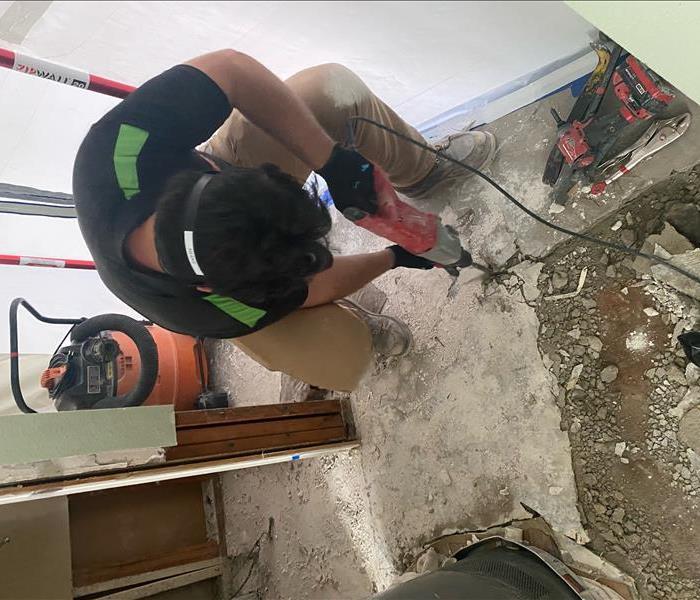 In this blog, we will explore the most common types of storm damage in San Diego and provide valuable tips on how to prevent them.
In this blog, we will explore the most common types of storm damage in San Diego and provide valuable tips on how to prevent them.
Living in San Diego, the beautiful Southern California city known for its mild climate and pleasant weather can sometimes be disrupted by severe storms. These storms can bring strong winds, heavy rains, and even hail, resulting in significant damage to homes and properties. In this blog, we will explore the most common types of storm damage in San Diego and provide valuable tips on how to prevent them, ensuring the safety and well-being of your property.
Structural Wind Damage
Strong winds during storms can cause structural damage to homes, compromising their integrity. To prevent severe structural wind damage, consider the following measures:
- Reinforce Roofing: Ensure that your roof is secure by checking for loose or damaged shingles, as well as providing proper insulation and reinforcement.
- Secure Doors and Windows: Install storm shutters or impact-resistant windows and doors to protect against wind pressure and flying debris.
- Trim Trees and Branches: Regularly trim trees near your property to prevent falling branches or trees during storms. Consult with an arborist or tree service professional for proper tree maintenance.
Flooding and Water Damage
Heavy rains associated with storms can lead to flooding and water damage inside your home. Take these preventative steps to minimize the risk:
- Maintain Gutters and Downspouts: Clean your gutters regularly to ensure proper water flow and direct water away from the foundation. Install downspout extensions to divert water further from the house.
- Improve Drainage: Ensure that the grading around your property slopes away from the foundation to prevent water from pooling near the building.
- Waterproof Basements and Crawl Spaces: Apply waterproof coatings or sealants to basement walls and floors. Install a sump pump in basements or crawl spaces prone to flooding.
Hail Damage
Although not as common in San Diego, hailstorms can cause significant damage to your home. Take the following preventive measures:
- Inspect and Maintain Roofing: Regularly inspect your roof for loose, damaged, or missing shingles. Consider impact-resistant roofing materials or hail guards for added protection.
- Protect Vehicles: If possible, park vehicles in garages or under-covered areas during hailstorm warnings. If no covered options are available, use car covers or find temporary shelter during the storm.
Power Outages
Storms can cause power outages, leaving your home vulnerable and uncomfortable. Consider these steps to mitigate the impact of power loss:
- Install Backup Power Systems: Invest in a backup power generator to ensure your home has a reliable source of electricity during outages. Consult with a professional to determine the appropriate generator for your needs.
- Prepare Emergency Kits: Assemble emergency kits that include flashlights, batteries, non-perishable food, and drinking water. These kits will help ensure your comfort and safety during power outages.
- Surge Protection: Install surge protectors to safeguard sensitive electronics and appliances against power surges caused by storms.
Implementing these preventative measures can minimize the risk of severe home damage from storms in San Diego. However, in the event of storm damage, it is crucial to contact professionals like SERVPRO® to assess and restore any structural wind damage, water damage, or hail damage promptly.
In Conclusion
San Diego's mild climate does not exempt it from the occasional severe storm. Understanding the most common types of storm damage and taking preventative measures can help protect your property and keep occupants safe. From reinforcing the structure against strong winds to mitigating flooding risk and preparing for power outages, taking proactive steps is the key to preventing severe home damage. Remember, in the event of storm damage, SERVPRO is always ready to assist with professional assessment and restoration to restore your property efficiently and effectively.
Understanding the Impact of Wind Damage & the Steps to Restoration
1/14/2024 (Permalink)
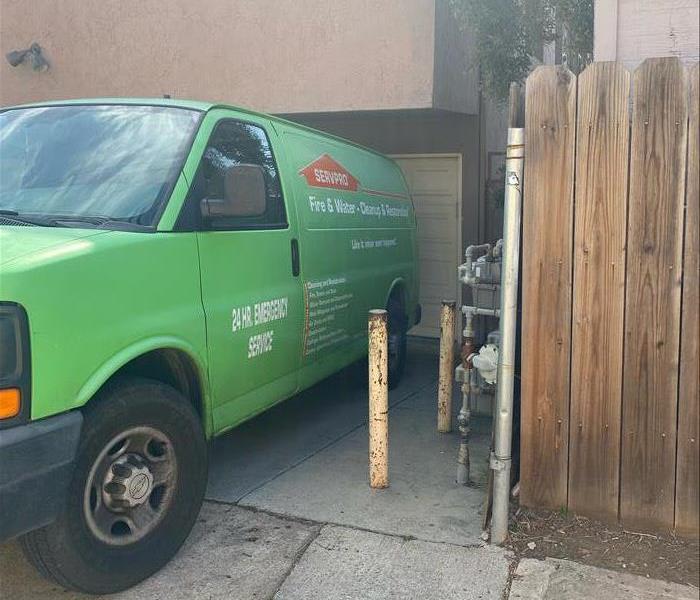 Whether it's from a severe storm, tornado, or hurricane, the aftermath of wind damage can be distressing and overwhelming.
Whether it's from a severe storm, tornado, or hurricane, the aftermath of wind damage can be distressing and overwhelming.
Wind damage can wreak havoc on homes and businesses. Whether it's from a severe storm, tornado, or hurricane, the aftermath of wind damage can be distressing and overwhelming. Understanding the implications of wind damage and knowing how to navigate the restoration process is crucial for swift recovery.
The Impact of Wind Damage
1. Roof Damage
Strong winds can uplift or dislodge shingles, cause roof leaks, or even lead to structural compromises. Timely inspection and repair are essential to prevent further water intrusion or structural issues.
2. Structural Compromise
Wind can weaken the structural integrity of buildings, causing damage to walls, windows, and doors. This may compromise the safety and security of the property.
3. Debris and Impact
Flying debris during high winds can cause severe damage to property exteriors, including siding, fences, and landscaping. Impact damage may necessitate repairs or replacements.
Steps to Address Wind Damage
1. Safety First
Prioritize safety. Assess the property for any immediate dangers and avoid entering areas that could pose risks due to structural instability.
2. Documentation
Document the damage by taking photographs or videos. This documentation will assist in insurance claims and help professionals understand the extent of the damage.
3. Temporary Repairs
Take immediate action to prevent further damage. Cover broken windows, tarp tarp-damaged roofs, and secure any exposed areas to mitigate additional harm.
4. Professional Assessment
Contact certified restoration professionals like SERVPRO of Mid-City San Diego to conduct a thorough assessment of the damage. Their expertise is vital in understanding the full scope of the restoration needed.
The Restoration Process
1. Inspection and Assessment
Trained technicians will perform a detailed inspection to identify all areas of damage and develop a comprehensive restoration plan.
2. Water Extraction and Drying
If water intrusion has occurred due to wind damage, professionals will extract standing water and implement drying techniques to prevent further issues like mold growth.
3. Structural Repairs
Repairing damaged structures, roofs, walls, windows, and doors is a priority. This ensures the property's safety and prevents further deterioration.
4. Cleanup and Restoration
Professionals will thoroughly clean debris, restore damaged areas, and return the property to its pre-damage condition.
Importance of Professional Assistance
Seeking professional help for wind damage restoration is crucial. Trained experts possess the skills, equipment, and experience necessary to efficiently restore your property. Their swift response can mitigate further damage and expedite the recovery process.
Wind damage can be a distressing ordeal, but with the right approach and professional assistance, recovery is possible. Prompt action, thorough assessment, and skilled restoration are crucial in mitigating wind damage's aftermath.
At SERVPRO of Mid-City San Diego, our dedicated team is committed to providing efficient wind damage restoration services, helping you restore safety, security, and peace of mind to your property. Contact us for expert assistance in navigating the restoration process and recovering swiftly from wind damage.
Essential Roofing Maintenance and Repairs for Storm Resilience in San Diego
9/17/2023 (Permalink)
Welcome to SERVPRO of San Diego's blog! We're here to provide you with expert insights to help you fortify your property against the challenges of nature. In this blog, we'll delve into crucial tips and strategies for enhancing your roof's resilience to storms in the beautiful city of San Diego. A strong roof is your best defense against the elements, so let's dive in!
1. Regular Roof Inspections: Your First Line of Defense
Regular roof inspections are the cornerstone of storm resilience. Schedule professional inspections at least twice a year, preferably in spring and fall. Look out for:
Shingle Condition: Replace any cracked, curled, or missing shingles to prevent leaks and water damage.
Flashing Integrity: Ensure that flashing around chimneys, vents, and skylights is tightly sealed to prevent water infiltration.
Gutter Maintenance: Clean gutters and downspouts to prevent water buildup that can lead to roof damage.
2. Reinforce Roof Structure: Strengthening for Severe Weather
Invest in reinforcements to help your roof withstand San Diego's occasional severe weather:
Roof Bracing: If your area is prone to strong winds, consider professional roof bracing to enhance structural integrity.
Hurricane Straps: Install hurricane straps to securely anchor your roof to the walls, minimizing the risk of detachment.
3. Seal Vulnerabilities: Waterproofing is Key
To enhance storm resilience, proper waterproofing is essential:
Seal Cracks and Gaps: Regularly inspect your roof for cracks and gaps, sealing them with appropriate materials to prevent water intrusion.
Waterproof Membranes: Consider applying waterproof membranes to vulnerable areas like flat roofs to prevent leaks.
4. Trim Trees and Overhanging Branches: Preventing Impact Damage
San Diego's storms can bring down branches and debris. Trim trees around your property to avoid:
Impact Damage: Falling branches can puncture your roof during a storm, leading to significant damage and leaks.
Clogged Gutters: Prevent debris from accumulating on your roof and in your gutters, reducing the risk of water pooling.
5. Emergency Repairs: Be Prepared
No matter how well-prepared you are, emergencies can still occur. Know how to perform basic emergency repairs:
Temporary Patching: Learn how to temporarily patch a leak to minimize damage until professional help arrives.
Secure Loose Items: Secure loose shingles or roofing components that might detach during a storm and cause further damage.
6. Professional Help: Storm Damage Restoration Experts
In the aftermath of a severe storm, it's crucial to seek professional assistance:
Swift Response: Contact storm damage restoration experts like SERVPRO of San Diego to assess and address any storm-related issues promptly.
Thorough Inspection: Professionals can identify hidden damage that might not be immediately apparent to homeowners.
Incorporating these tips into your roofing maintenance routine will help fortify your home against San Diego's weather. A resilient roof is an investment in the long-term protection of your property and the safety of your family.
For comprehensive storm damage restoration and expert roofing repairs in San Diego, trust the skilled professionals at SERVPRO. Contact us today to ensure your home is ready to face whatever nature throws its way.
Essential Tips for Maintaining a Commercial Roof
6/17/2023 (Permalink)
The roof is one of the most critical components of any commercial building. It provides protection against the elements and plays a crucial role in maintaining the structural integrity of the property. To maximize the lifespan and performance of your commercial roof, regular upkeep is essential. In this blog post, we will discuss key tips and strategies for maintaining a commercial roof, ensuring its longevity, and avoiding costly repairs.
Regular Inspections
Perform routine inspections of your commercial roof to identify potential issues early on. Look for signs of damage, such as cracks, punctures, loose or missing materials, and signs of wear and tear. Inspect flashings, seams, drains, and gutters for any signs of damage or blockages. Regular inspections allow you to address minor problems before they escalate into more significant issues.
Clear Debris and Keep Gutters Clean
Remove debris, leaves, and other materials from the roof surface regularly. Debris accumulation can clog drains and gutters, leading to water backup and potential roof leaks. Ensure that gutters and downspouts are clear of debris to facilitate proper water drainage. Regular cleaning will prevent unnecessary strain on the roof and help maintain its integrity.
Address Roof Leaks Immediately
If you notice any signs of roof leaks, such as water stains on ceilings or walls, mold growth, or dampness, address them promptly. Roof leaks can cause significant damage to the building's interior and compromise the structural integrity of the roof. Identify the source of the leak, repair it, and assess any necessary repairs to the affected areas.
Maintain Proper Drainage
Ensure that the roof's drainage system is functioning correctly. Improper drainage can lead to water pooling, which can cause structural damage and roof deterioration over time. Regularly inspect drains, gutters, and downspouts for blockages or clogs, and address them promptly. Consider installing additional drainage systems if needed to redirect water away from the roof.
Conduct Professional Roof Inspections
In addition to regular inspections, it is advisable to schedule professional roof inspections periodically. Roofing professionals can provide a comprehensive assessment of the roof's condition, identify potential issues, and recommend necessary repairs or maintenance. Professional inspections are especially crucial after severe weather events or as part of a preventive maintenance plan.
Perform Regular Roof Maintenance
Follow a proactive maintenance plan for your commercial roof. This may include tasks such as cleaning, resealing roof penetrations, repairing damaged flashings, and maintaining rooftop equipment. Stay updated on manufacturer guidelines and recommended maintenance practices specific to your roof type and material.
Address Vegetation and Pest Control
Keep an eye out for vegetation growth on the roof, such as moss or algae. These organisms can retain moisture and accelerate roof deterioration. Take necessary measures to remove or prevent vegetation growth. Additionally, address any pest infestations promptly, as pests can cause damage to the roof membrane or create entry points for water.
Proper upkeep of a commercial roof is crucial for its longevity and performance. By following these essential tips, including regular inspections, clearing debris, addressing leaks, maintaining proper drainage, scheduling professional inspections, performing regular maintenance, and addressing vegetation and pest control, you can protect your investment and avoid costly repairs. Remember that a well-maintained roof ensures the safety, functionality, and longevity of your commercial property.
3 Reasons To Hire Professional Flood Cleanup
8/22/2022 (Permalink)
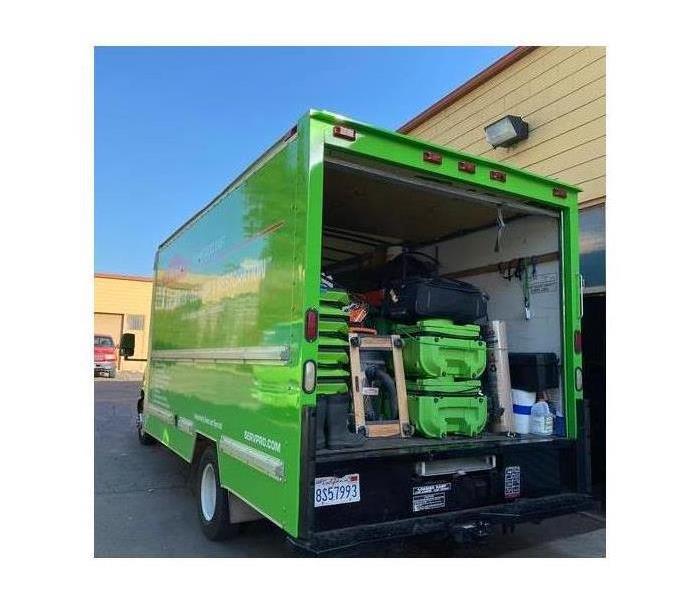 SERVPRO is ready to mobilize for any disaster, from fires to floods and anything in between!
SERVPRO is ready to mobilize for any disaster, from fires to floods and anything in between!
Reasons To Hire Expert Flood Cleanup
A heavy storm near your home in Rolando Village, CA, can cause a lot of water damage. Water can leak in from damaged areas of your roof, through broken windows or even from an overtaxed sewer. If your home needs repairs, it is better to call flood mitigation professionals than try to clean up the mess yourself. Here are three of the many reasons why experts are necessary.
1. Thorough Assessment
Certified professionals have the training and experience needed to determine the repairs your home needs. Without reliable testing, you may end up with a mold problem that festers in the damaged areas your own inspection misses. Technicians can root out the cause of the problem so that it can get completely resolved.
2. Proper Disinfection
Flood water is considered black water, or Category 3 water. Category 3 water is contaminated with bacteria, viruses and other microscopic organisms that you don’t want living on the surfaces in your home. Storm remediation isn’t just a matter of cleaning up water damage. Experts can also disinfect all the affected areas so that your home is free of any germs brought in by the storm.
3. Claim Information
Hiring professional mitigators can give you the information you need to file a successful insurance claim. The specialists can provide an itemized list of repairs you need and how much each repair costs. This list can be especially helpful if your insurance adjuster is delayed by the volume of claims in the area. Having documentation means you don’t have to wait on the adjuster to arrive to start the restoration process.
If a storm causes water damage to your home, one of your first calls should be to a local restoration company. Professional technicians can help you by identifying the whole problem, making sure cleanup includes disinfection and providing vital information for your insurance company. You may find that such services are well worth the cost.
How Can You Protect Your Home From Roof Damage?
5/25/2022 (Permalink)
Steps To Preserve Your Roof
Of all the structural elements of your Normal Heights, CA, home, the roof is among the most important. A strong roof protects your home from the elements. It provides safety and security. If your home suffers roof damage, you need to act decisively and appropriately. Following the right steps will help ensure that you can preserve your roof.
1. Understand the Common Issues That Can Cause Damage
A well-built roof can last up to 20 years or more. However, problems can arise under certain conditions. Be aware of these so you can minimize any damage and the need to replace the roof.
Wind damage can blow off shingles. Hail damage can break shingles and put holes in the roof. Excess moisture can rot the building material. All of these issues can expose your home to flooding or other environmental concerns.
2. Inspect for Roof Damage Often
A professional should regularly inspect the roof of your Normal Heights, CA, house. In doing so, the technician can identify emerging problems and concerns, pointing out areas that need immediate attention and allowing you to get on top of any damage before it gets worse. Have your roof inspected once or twice a year. It is especially important to inspect it after heavy winds, excessive rainfall and hailstorms.
3. Hire the Right Professionals
For inspections, repairs and installations, you want a qualified team on your side. Assessing and repairing wind and storm damage requires the expertise of storm restoration professionals. The team should be ISO-certified and have experience using moisture survey technology. Make sure the company is thorough and performs a visual inspection of the membrane and flashings. You also should look for professionals who do core analysis testing.
Roof damage can have a detrimental effect on your home. There are ways to prevent significant problems. Careful attention and hiring the right people will give you peace of mind and keep your roof strong.
3 Tips for Preventing Mold Growth in Your Business
4/6/2022 (Permalink)
 A storm caused mold growth in this home, so our SERVPRO teams responded immediately to begin containing and cleaning!
A storm caused mold growth in this home, so our SERVPRO teams responded immediately to begin containing and cleaning!
There are many ways for professionals to remediate the impact of water damage. Mold growth can occur within 24 hours of a flood, so experts in San Diego, CA need to get to work immediately to protect your building. However, commercial property owners should invest in preventing mold in the first place rather than waiting until it actually occurs. While you may not be able to stop mold from growing entirely, you can reduce the likelihood through some simple tips.
1. Have Someone Inspect Your Building Regularly
The problem with mold is that it tends to grow in dark, damp areas of buildings. You may not visit every single corner of the building frequently, so you should hire someone to come out and inspect things every so often. An annual inspection can help greatly, and a water damage restoration expert will know what to look for.
2. Decrease Moisture Levels
Depending on the city in which you do business, the air may be naturally humid all the time. This increases the chances of mold growth, but you can decrease humidity within your own building. You should consider installing a dehumidifier in rooms that are likely to have excessive moisture. Placing these items in the bathroom and basement can help tremendously.
3. Make Essential Repairs Quickly
Leaky roofs, cracked window frames and broken foundations can all increase the likelihood of mold developing. As soon as you realize a part of the building is damaged, you need to address it immediately. Even a small leak can lead to mold if you are not careful.
Ultimately, mold prevention is entirely dependent on remaining vigilant and taking care of any problematic issues as soon as they come up. It is much easier and much more affordable to prevent mold than to get rid of it. Your employees will thank you for being so proactive in addressing water damage.
Signs, Symptoms and Causes of Indoor Mold Growth in Commercial Spaces
2/23/2022 (Permalink)
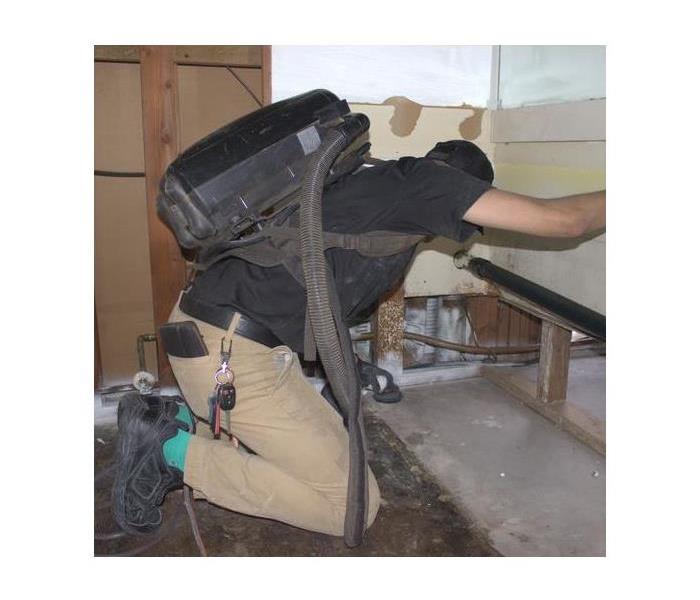 Our highly trained professionals are equipped to remediate any mold damage loss!
Our highly trained professionals are equipped to remediate any mold damage loss!
Indoor mold growth due to moisture is a common issue for many businesses in San Diego CA, whether it is caused by broken pipes or broken supply lines, high humidity levels or storm-related flooding events. To protect your property, you should know these key factors in recognizing risks and some methods to prevent mildew and address fungal infestations.
Sources of Indoor Mold
Mold and mildew are propagated through tiny, microscopic spores that are ubiquitous in both indoor and outdoor spaces. Moisture and oxygen are all that are required for these fungal invaders to take foothold on nearly any surface that contains an organic nutrient source. This includes food, paper and wood as well as building materials like insulation, drywall and carpeting. While major flooding events are one major source of mold issues, small leaks and even high humidity can be enough to create an ideal environment for growth.
Risk Factors
When it comes to minimizing the spread of aggressive mildew or mold strains, early detection is essential. While mold can take hold nearly anywhere in a building, these are common areas to inspect for visible signs:
- Tile grout and wallpaper seams
- Window sills
- HVAC drip pans
- Ceiling corners
Wall switch plates
Additionally, any areas that show evidence of water damage should be monitored carefully. In many cases fungal colonies grow behind the scenes, whether behind wallpaper or tiling or within insulation and drywall, rotting structural elements from the inside out.
Remediation Processes
Whether you only notice a distinctive musty smell or your building is having issues with water damage from broken pipes or flooding, it is important to contact a professional mold remediation company as soon as possible to minimize restoration complications and costs. These trained specialists will be able to quickly assess the extent of damage, remove standing water, identify strains of mold or mildew present and perform thorough dehumidification of affected spaces to eliminate all residual moisture.
Staying Safe This Flood Season
1/5/2022 (Permalink)
Keeping Safe During the Flood Season
Hopefully, you've prepared your home for potential flooding in Colina Del Sol Park, CA, this year, but now it's time to prepare yourself. The importance of brushing up on flood safety information before disaster strikes cannot be overstated. Here are four safety tips to ensure your well-being if your home is affected by flooding.
1. Watch out for floodwater. Assume any floodwater you see is contaminated. These waters may have come into contact with sewage or other hazardous materials (such as chemicals). Debris carried by the water may have sharp edges, and dangerous insects or animals could be lurking just under the surface. Floodwater is also much stronger than it seems. Do not attempt to wade through moving water; you can quickly be knocked over or swept away.
2. Use good judgment around electricity. Always turn off all power and gas before entering a flood-damaged home. Never attempt to use electrical appliances that have come into contact with floodwater until they have been checked for safety. Avoid downed power lines and keep yourself far away from any standing water in their vicinity.
3. Know how proper sanitation affects your health. Sound flood safety practices include discarding any flooded items that cannot be sanitized. This includes water-retentive objects like rugs and stuffed animals, cosmetics and toiletries, and any wooden kitchen utensils. Always inspect and disinfect packaged food before use. Even things that appear to be sealed may have punctures or cracks you cannot see. If you just don't know, let it go.
4. Be mindful of physical dangers. Most serious accidents occur during the clean-up process. Be careful when moving heavy waterlogged objects, wear protective clothing to avoid cuts, and don't do anything that might result in a dangerous fall. It's always safer to consult with restoration experts before attempting difficult cleanup procedures yourself.
Though you'll want to quickly survey any damage and begin cleaning up immediately after a flood, the most important part of any post-disaster restoration is assuring your family's well-being with proper flood safety. It is always possible to repair your home. It may be more difficult to repair your health.





 24/7 Emergency Service
24/7 Emergency Service









